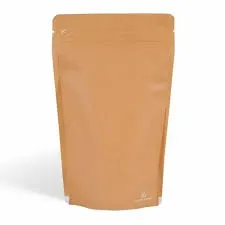- Afrikaans
- Albanian
- Amharic
- Arabic
- Armenian
- Azerbaijani
- Basque
- Belarusian
- Bengali
- Bosnian
- Bulgarian
- Catalan
- Cebuano
- chinese_simplified
- chinese_traditional
- Corsican
- Croatian
- Czech
- Danish
- Dutch
- English
- Esperanto
- Estonian
- Finnish
- French
- Frisian
- Galician
- Georgian
- German
- Greek
- Gujarati
- haitian_creole
- hausa
- hawaiian
- Hebrew
- Hindi
- Miao
- Hungarian
- Icelandic
- igbo
- Indonesian
- irish
- Italian
- Japanese
- Javanese
- Kannada
- kazakh
- Khmer
- Rwandese
- Korean
- Kurdish
- Kyrgyz
- Lao
- Latin
- Latvian
- Lithuanian
- Luxembourgish
- Macedonian
- Malgashi
- Malay
- Malayalam
- Maltese
- Maori
- Marathi
- Mongolian
- Myanmar
- Nepali
- Norwegian
- Norwegian
- Occitan
- Pashto
- Persian
- Polish
- Portuguese
- Punjabi
- Romanian
- Russian
- Samoan
- scottish-gaelic
- Serbian
- Sesotho
- Shona
- Sindhi
- Sinhala
- Slovak
- Slovenian
- Somali
- Spanish
- Sundanese
- Swahili
- Swedish
- Tagalog
- Tajik
- Tamil
- Tatar
- Telugu
- Thai
- Turkish
- Turkmen
- Ukrainian
- Urdu
- Uighur
- Uzbek
- Vietnamese
- Welsh
- Bantu
- Yiddish
- Yoruba
- Zulu
standard cardstock weight
Understanding Standard Cardstock Weight A Comprehensive Guide
Cardstock is a versatile material used for various printing and crafting purposes, from business cards and brochures to invitations and art projects. One of the most crucial factors to consider when choosing cardstock is its weight. Cardstock weight can significantly impact the appearance, durability, and overall quality of your final product. In this article, we will delve into the concept of standard cardstock weight, how it is measured, and its implications for different applications.
What is Cardstock?
Before discussing weight, it’s essential to understand what cardstock is. Cardstock is a type of paper that is thicker and more durable than regular printer paper. It typically falls within a range of thicknesses, making it ideal for projects that require sturdiness and a professional finish. This paper is available in various finishes, colors, and textures, which further broadens its application across different fields.
Measuring Cardstock Weight
The weight of cardstock is measured in pounds (lbs) or grams per square meter (gsm). In the United States, the pound system is more common, while gsm is a global standard used in many countries. For instance, when referring to 80 lb cardstock, this means that a ream (500 sheets) of the paper weighs 80 pounds. Conversely, 200 gsm cardstock indicates that each square meter of the paper weighs 200 grams.
Understanding these measurements is crucial. A higher weight number typically corresponds to thicker, more rigid cardstock, which adds to the paper's durability and the quality of the printed image. On the other hand, lighter weights may be more appropriate for projects that require flexibility or lower shipping costs.
Common Cardstock Weights
Here are some standard weights and their typical uses
- 65 lb (176 gsm) This weight is often used for lightweight projects, such as greeting cards or scrapbooking. It offers a good balance of sturdiness and flexibility, making it easy to cut and handle.
- 80 lb (216 gsm) A very popular choice for business cards, invitations, and flyers. It provides a professional feel while still being manageable for printing.
standard cardstock weight

- 100 lb (271 gsm) This cardstock weight is ideal for projects that demand a more substantial feel, such as premium business cards, covers for reports, and high-quality prints. It is less prone to bending and folding.
- 110 lb (298 gsm) Often used for heavy-duty applications, this cardstock is perfect for postcards, menus, and any printed material that requires exceptional durability
.- 130 lb (352 gsm) and above These weights are classified as heavyweight cardstock and are suitable for specialized uses, such as art prints, brochures requiring substantial thickness, and other marketing materials that need to impress.
Factors Affecting Cardstock Choice
When selecting cardstock weight, consider the nature of your project. Here are some factors to keep in mind
1. Purpose Understanding what your finished product will be used for will help you select the appropriate weight. For instance, a business card meant to be handed out should be thicker than a simple flyer.
2. Ink Usage Thicker cardstock may absorb ink differently than lighter options, which could affect color vibrancy and print quality. If you are using heavy ink coverage, consider a weight that can handle it effectively.
3. Cost and Budget Heavier cardstock tends to be pricier. A balance between quality and cost should be maintained, particularly for large print runs.
4. Printer Compatibility Ensure your printer can accommodate the weight of the cardstock you choose. Some printers may struggle with heavier stocks or may require adjustment to prevent jams.
Conclusion
In conclusion, understanding standard cardstock weight is essential for anyone engaged in printing, crafting, or graphic design. By considering cardstock weight alongside other project parameters, you can ensure that your final products not only meet quality expectations but also convey the right message to your audience. Whether you're creating a simple invitation or a professional business card, choosing the proper cardstock weight will play a pivotal role in achieving your desired outcome.













